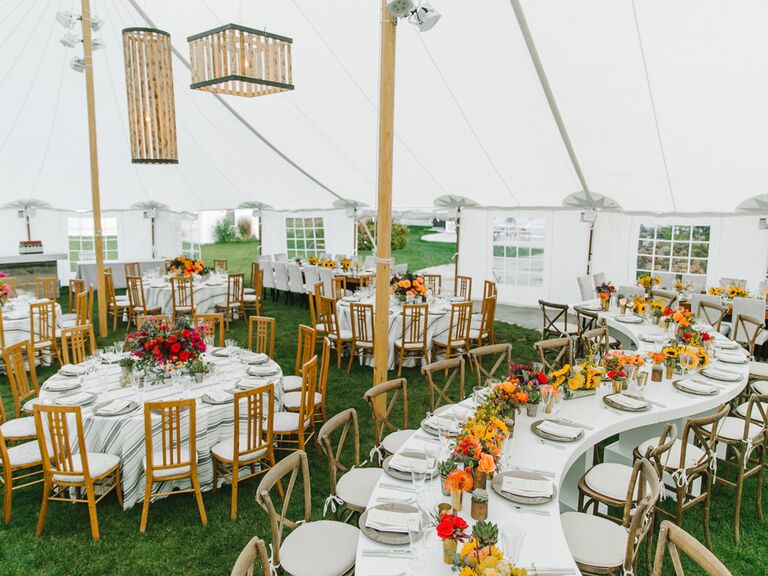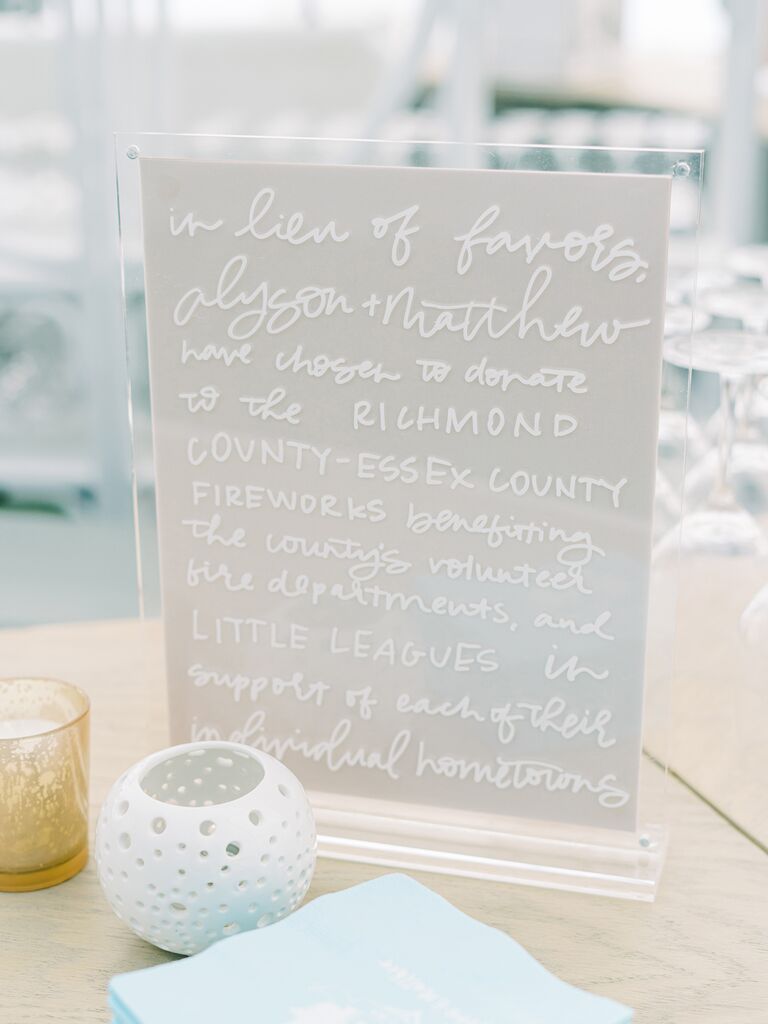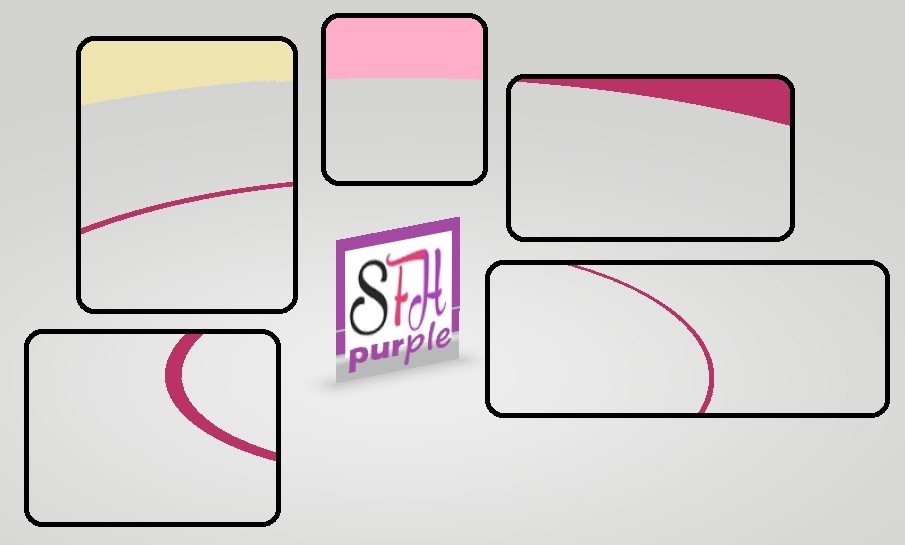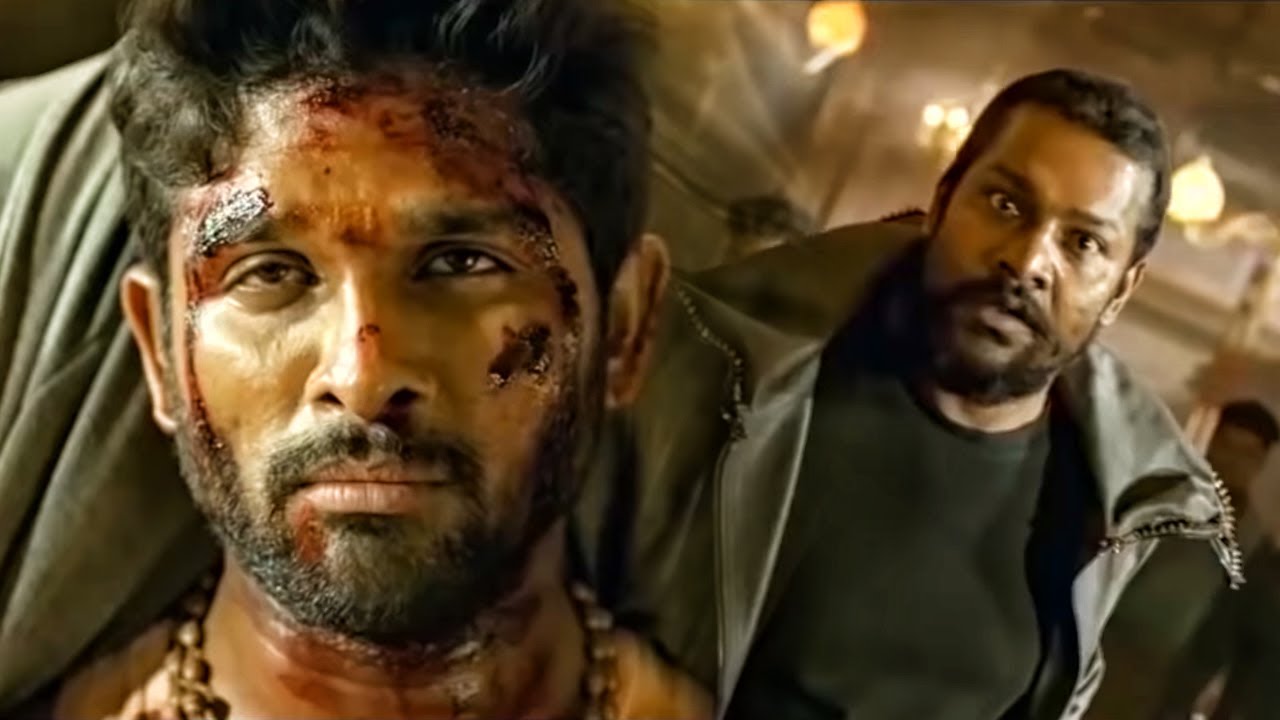
Trending Story


Here is allabout “Trending” worldwide :
Portraying all Stories
on/from/about
“Trending”
Add Story/ Your Say
[*Select Category/Tag:
Trending
at Your Next Publish Screen.]

YouTube: most viewed video | Statista
Basic Account
Get to know the platform
Single Account
The ideal entry-level account for individual users
$59 $39 / Month *
in the first 12 months
Corporate Account
Full access
* All products require an annual contract; Prices do not include sales tax.
Statistics on “YouTube”
Further related statistics
Further Content: You might find this interesting as well
Statistics
Learn more about how Statista can support your business.
YouTube, & Wikipedia. (August 25, 2020). Most popular YouTube videos based on total global views as of August 2020 (in billions) [Graph]. In Statista. Retrieved September 08, 2020, from https://www.statista.com/statistics/249396/top-youtube-videos-views/
YouTube, und Wikipedia. “Most popular YouTube videos based on total global views as of August 2020 (in billions).” Chart. August 25, 2020. Statista. Accessed September 08, 2020. https://www.statista.com/statistics/249396/top-youtube-videos-views/
YouTube, Wikipedia. (2020). Most popular YouTube videos based on total global views as of August 2020 (in billions). Statista. Statista Inc.. Accessed: September 08, 2020. https://www.statista.com/statistics/249396/top-youtube-videos-views/
YouTube, and Wikipedia. “Most Popular Youtube Videos Based on Total Global Views as of August 2020 (in Billions).” Statista, Statista Inc., 25 Aug 2020, https://www.statista.com/statistics/249396/top-youtube-videos-views/
YouTube & Wikipedia, Most popular YouTube videos based on total global views as of August 2020 (in billions) Statista, https://www.statista.com/statistics/249396/top-youtube-videos-views/ (last visited September 08, 2020)
as per our monitoring this Story originally appeared *here*
YouTube: most viewed video | Statista
11 Construction Industry Trends for 2020
The latest construction industry statistics show a booming and sustainable sector. Yet, rising construction costs and labor challenges in addition to new regulations are reducing the margin for error and waste.
For an industry that remains slower to innovation and adopting trends, the same construction trends persist year after year with slightly different nuances. New technology is continuing to change the construction site, improve the ability to win projects, and increase profit margins. Trends and movements are changing the roles of industry professionals and frontline workers.
As the industry becomes more competitive and the market shifts, harnessing these construction industry trends will prove valuable for any construction firm. Read on for the must-watch construction trends of 2020 to help you can stay competitive and gain an edge in the industry.
1. Efficiency-Improving Technology
The biggest differentiator for builders and developers this year is likely to be technology in construction — specifically, the innovations that can enhance efficiency.
Smart Contracts

Forbes Council member Amir Baluch MD points out the coming impact of blockchain technology on construction. Experts see it as being a powerful component in providing a more secure and fast-moving workflow that gives all parties involved more confidence and productivity.
Smart contracts offer all organizations in a project a shared system to do business, allowing them to buy, track, and pay for services. Rather than getting contracts and tracking deliverables from all separate parties, firms can use smart contacts as an all-in-one tracking system where rules and deadlines are set and the blockchain enforces them. This system will carry make for faster closeouts, increased security, better project tracking, and an automated supply chain.
Drones in Construction

Drone use in the construction industry continues to be one of the fastest growing trends, with usage rising by 239 percent year over year. The technology offers far more uses than just aerial photography for real estate and commercial efforts.
Today’s drones are used for rapidly mapping large areas over long distances, producing valuable aerial heat maps and thermal images. The advancing drone software provides real-time, actionable, data that can be used for rapid decision making, streamlining the entire construction process.
Personal safety and equipment loss continues to be the biggest areas of liability in construction. Drones can be increasingly used to reach heights and do jobs in place of human workers to prevent injury. Between $300 million and $1 billion in construction equipment is stolen each year. As on-site security tools, drones can be leveraged to reduce labor costs and minimize the risk of theft. That keeps projects on schedule and moving faster too.
More advanced future uses include monitoring equipment use and incorporating AI to organize moving construction equipment.
Augmented Reality (AR)

The augmented reality is expected to be worth $90 billion by next year as it continues to provide new applications. On the client front, AR means efficient project staging and making pre-construction projects tangible for buyers and tenants.
For the builders and developers, AR facilitates the use of wearable technology as well as 360-degree video to enable:
- 3D visualization of future projects on their surrounding environment
- Automated measuring of buildings
- Fast and affordable simulation of architectural and structural changes
- Safety training and hazard simulations
2. Mobile Technology

According to eSub, 80 percent of construction professionals say mobile technology is a top priority. It provides many applications from real-time inspections to on-site accountability and being able to measure spaces with just a mobile phone camera. Mobile apps in the marketplace include AirMeasure and Infotycoon. Those without complete mobile connectivity will be at a productivity and sales disadvantage from this year forward.
3. Building Information Modeling (BIM)

Building information technology is helping industry leaders stand out with better efficiency. BIM allows users to generate computer representations of buildings and utilities. The ease of managing these models and sharing data can enable superior prefabrication of parts, leading to on-time and accurate completion. Autodesk describes it as an intelligent 3D model-based process to help professionals manage buildings and infrastructure.”
According to Finances Online, top BIM software solutions available in 2020 include:
4. Construction Management Software

Having great construction management software is a vital component for remaining competitive, building a valuable business, and mastering operational efficiency.
While each software service may have slightly different functions and features, the best holistically tackle end-to-end needs from RFIs to compiling data, sharing files with mobile teams, budgeting, document storage, payroll, and HR, monitoring inventory and project management.
Top reviewed construction management software solutions in 2020 include:
- Procore
- CoConstruct
- Buildertrend
- ProjectSight
- RedTeam
- Quick Base
- Projul
- PlanGrid
- Sage 300 Construction and Real Estate
Choosing the right construction management software is important for your firm. Begin with looking at ease of use and integration with other existing software. Look for scalable software that fits now, and can take you where you want to go. Evaluate customization options, upgrades, and additional features and check for availability of support and training to get up and running.
5. Modular & Prefabricated Construction

Modular and prefab construction has enjoyed a major movement over the past few years. Construction Dive predicts modular construction will continue to grow by 6.9 percent per year and hit $157 billion by 2023, driven by the lack of skilled labor and affordable and growing material costs.
As the technology supporting off-site constructed modular units improves, we can expect to see a lot more activity in this sector. Many smaller builders have developed innovative, green building designs with this method, increasing their market visibility and boosting client trust.
New technology has also enabled these prefab and modular buildings to get taller and taller. An example is the recent opening of the 21-story CitizenM Bowery Hotel in NYC. The 100,000 square foot hotel hosts 300 modular guest rooms, as well as a rooftop bar, lounge, and coworking space. The average modular project square footage has tripled to an average of 200,000 square feet.
Other major international builders say they plan to pare down their on-site construction activity to just 25 percent by 2025 in favor of prefab construction.
6. Green Construction

Green construction has become the expected standard by homebuyers, renters, and commercial tenants. Unfortunately, many sustainable and eco-friendly features remain a luxury, despite their long term savings. Though this may substantially change over the next few years.
Whether it is pressure within the construction industry, demand from end customers or regulations, expectations are that renewable energy will continue to grow as a percentage of overall consumption. That is a huge market, given buildings are still responsible for 40 percent of our national energy consumption and 30 percent of greenhouse gas emissions.
Green construction includes both the technology to lower a building’s carbon footprint and the use of resources and building models to reduce the use of resources. Perhaps an even greater driver of green building is proof of its value for occupants. Research shows that green buildings can have a positive psychological and physiological impact.
7. Better Safety Equipment

The industry is also witnessing a rise of machines capable of identifying common safety issues and eliminating those threats one at a time. Innovations to work boots allow them to connect to Wi-Fi and alert others if a user has fallen.
Beyond worker gear, we are already seeing robotics being able to replace human workers. This ranges from material moving “mules” to scaffolding and bricklaying robots. Many companies, however, claim that robots are not replacing any human jobs.
More accurately, they are changing the jobs humans do — in most cases, augmenting human decision making and making room for different, higher-level jobs. One of the most important being the ability to decipher and translate data findings into actionable insights.
Then, we also have 3D printing which can decrease transportation risks and environmental sensors to detect noise, heat, and wind at construction sites and serve as warnings to evacuate construction workers and move costly construction equipment.
8. Investment in Infrastructure

While many of the factors involved are still controversial and require ongoing experimentation, the biggest tech companies in the world are investing in megaprojects to build smart, sustainable cities. This includes names like IBM, Microsoft, and Cisco, all of whom are deep into smart city development. Investment in these cities is expected to reach $135 trillion in the next 24 months.
In addition to cities, some notable international megaprojects in the works include Masdar City, Hudson Yards, Songdo International Business District, and the Delhi Mumbai Industrial Corridor. The projects range from tens of billions of dollars to over $100 billion and are projected to change the economy, improve the infrastructure, and contribute to the environment.
9. Persistent Labor Shortage

One of the most noticeable construction trends for the past few years has been an alarming labor shortage. We are at a moment in the construction cycle when labor is expensive and competitive. Robots may pick up a lot of the slack, though there appear to be few human replacement workers in the pipeline.
However, we will need more educated workers to manage and interpret the data produced by new technology. Fortunately, women are stepping up to fill some of this gap. According to the Bureau of Labor Statistics, only 9.9 percent of construction industry workers are women. However, trends show a 94 percent growth in female-owned construction firms from 2007 to 2018, with around 30 percent of companies promoting a woman to a senior position in 2018.
The industry is also placing its targets on recruiting Generation Z, those who are born between 1995 and 2010. Despite their perceptions of trade school, construction firms will be wise to point out the career growth potential of construction jobs, the value of trade school and apprenticeship programs, and the opportunity to experiment with new technology.
10. Increasing Material Costs

As of October 2018, costs for construction materials have risen 7.4 percent year over year according to The Association of General Contractors. Rising interest rates are likely to compound all types of costs, resulting in further pressure on total construction. Technologies like drones, AR, and BIM will prove key to helping to maintain project volume and combat this cost pressure.
Innovative new building materials may push up costs further, even though they may ultimately provide more savings for users in the long run. Some of these innovative materials include:
- Self-healing concrete
- 3D graphene
- Transparent aluminum
- Light generating concrete
- Invisible solar cells
11. Companies Moving Away From Megaprojects

One of the issues for construction firms that work on megaprojects like highways and publicly owned buildings is that they have a fixed price agreement. With construction, however, things will undoubtedly change and additional costs will be incurred. This can often lead to disputes between contractors and the owner or client.
Some of the biggest companies, like Skanska and Lendlease, announced in 2019 that they were no longer going to pursue large projects, and rather, instead, they are deciding to opt for more private and contract type arrangements. It’ll be interesting to see how these projects will be built, as America’s infrastructure degrades due to time or extreme weather events.
These construction industry trends are changing the business and global landscape. Rising prices, scarce skilled labor, and regulatory challenges may only become tougher over the next few years. By adopting new practices, leveraging new technologies, and investing in new projects, builders and developers can reduce risk, win more contracts, and enjoy profitability.
Overall, the outlook for the construction industry is positive. As your firm strives for greater efficiency and safety, be sure to keep up with demand by using a reliable rental equipment network with BigRentz.
as per our monitoring this Story originally appeared *here*
11 Construction Industry Trends for 2020

The Top Wedding Trends of 2020
With the arrival of the New Year comes a fresh crop of accompanying 2020 wedding trends. The Knot Editors are seeing bold pops of color and serious statements touch everything from inventive ceremony aisle ideas to food and beverage to the invitation suite. The best reason of all? Couples are making each aspect of the wedding uniquely their own, meaning sentimental color palettes that extend beyond your Something Blue to inventive themes that reflect your one-of-a-kind love story. Welcome to a dazzling new decade. After all, it’s time for 2020… weddings, that is.


Kelley Raye Photography, LLC
1. Green Vibes
Sustainable weddings are on the rise and we’re here for it. Consider “upcycling” your wedding, by committing to zero waste or a reduced carbon footprint. A lighter version of this 2020 wedding trend includes resetting a family stone or heirloom engagement ring, repurposing ceremony florals, sourcing locally grown food or hiring vendors who also prioritize sustainability (psst: we know tons! Check out our Local Marketplace!).


Perry Vaile Photography
2. Micro Weddings
This wedding trend is by invite only—think 40 people or less. But like any exclusive party, a celebration of this kind delivers big. The budget per guest is higher, which means your very nearest and dearest are treated to bespoke touches, elaborate meals (tasting menu anyone?) and tons of personalization. This style soiree is perfect for introverts or people hoping to celebrate with a smaller group of loved ones.


Forged in the North
3. Magical Mysticism
If there’s one theme you need to know about 2020 wedding trends, this is it: mysticism is in. This spiritually charged vibe combines all the things: crystals, saging, palo santo, even aura photobooths. Don’t force this though, make it work for your unique couple style—send guests home with a rose quartz crystal, the classic stone for love, or ask your guests to pass around your wedding rings during your ceremony, imbuing them with good energy and well wishes.


Kate Supa Photography
4. Inclusive Menus
Couples are being more thoughtful about inclusivity when it comes to every aspect of wedding planning, reception menus notwithstanding. Eats are going to check all the boxes in 2020. Vegetarian? No problem. Vegan with a nut allergy? We got you. Be considerate of all your guests by offering up a variety of cuisines and sips too (delicious non-alcoholic drinks are being crafted with care by mixologists too).


Jessa Schifilliti
5. Barrettes and Combs
Veils aren’t going anywhere, but tiaras have given way to the latest in hair jewelry—barrettes and combs. These wedding hair accessories are often adorned in pearls, rhinestones and colorful enamels. They’re great for holding back natural curls or creating a second style for your wedding reception.


Mann and Wife Photography
6. Trending Hues
You probably didn’t start planning your wedding with a color scheme in mind, right? Settle on your vibe or style first (take our Wedding Style Quiz) and then find a way to add a serious pop to your celebration. Color is one of our favorite 2020 wedding trends. Expect to see a lot of neo mint, a.k.a. the new millennial pink; cassis, not quite pink, not quite purple; yellow, a mellow, rich hue with earthy undertones; and faded denim, a blue that equally fresh and serene.


Laffler Photography
7. It’s Lit
Good lighting is the surest way to get those 2020 wedding decor trends noticed. From hanging installations to tube lighting and LED bars, the options are endless. Change up the feeling of your party from dinner to dancing with a light show or add strings of fairy lights to a concentrated space, like above your cake table for maximum effect. And fret not, candlelight is still on trend for creating an intimate and romantic vibe.


Erin L. Taylor Photography
8. Edible Florals
Frozen in ice-cubes, tossed in salads, sprinkled on tops of dessert, edible flowers are a big wedding reception trend for 2020. This pretty extra is perfect for floral-loving duos and an easy way to elevate virtually anything from infused water to classic vanilla cake. Florals and weddings are synonymous so pair your edible petals with dried flowers for a romantic effect (think: pressed in invites, or as confetti after I do).


Emily Tebbetts Photography
9. Table Remix
As far as wedding reception trends go, this one is budget friendly: instead of only ten-top rounds or a long farmhouse table, opt for more artful settings. Winding tables—multiple tables pushed together to create a design—add an extra element to reception set ups. Not enough room to snake your seating? Configure your long rectangular tables into a fun design (think: X marks the spot).


Jessa Schifilliti
10. Self-Serve Refreshments
We’re not talking a cooler full of cold ones, this wedding trend dresses up the actual serving of a signature sip. An artfully created wall-mounted dispenser, a tricked out bar of pour-over drinks, or a slew of specialty garnishes allows guests to create their perfect cocktail. Bonus: you’ll need one less bartender to pull it off.


Jenny Fu Studio
11. Statement Wedding Decor
Go for the wow-moment. Instead of stretching your decor budget to include many things, narrow in on one or two true statement moments, like hanging florals over dining tables, a neon installation that doubles as a ceremony altar or an explosive firework sendoff. Your guests will be sure to remember a real standout detail, especially if it feels very “you guys.”


Elizabeth Wells Photography
12. Dressed To Impress
Black is taking a backseat to blue. Navy, teal and cobalt hued jackets are trending when it comes to tuxedos and suits, while accessories of all kinds continue to be the favored way to really personalize a look. Unique wedding dress codes (think: white party!) are also on the rise.


Judy Pak Studio
13. The Cheese Hour
Think of this 2020 wedding trend as the savory twist on the Viennese Hour (traditionally an opulent dessert display following the cake cutting). Instead of tables of sweets, wheels of cheese, crackers, nuts and fruit are piled high. This lux charcuterie board can also check the box for end of night nibbles for your guests—win-win!


Rachel May Photography
14. Charity Check
Instead of dolling out party favors at the end of the night (or in addition too!) thank your guests for celebrating with you by making a donation to a charity that means something to you as a couple. One of our favorite 2020 wedding trends is giving back, in all forms. You can also link a charity to your The Knot Wedding Registry—with every purchase guests make, you’ll be doing some good.


The Teagues
15. Personalized Paper
Your wedding invite can set the tone for your whole celebration—but it doesn’t have to. Lean into the wedding trends of 2020 with something that speaks to you as a couple, like using recycled paper and soy based inks for eco-friendly correspondence. Opt for a modern vibe by embracing bold colors, pattern and texture in your wedding invites. Or delight a more intimate guest list with a pop-up or acrylic invite that will really wow.


Roey Yohai Studios
16. Interactive Eats
Donut walls are giving way to more interactive (yet equally delicious) culinary moments. Conveyor belts doll out appetizers, while molecular gastronomy shows up at dinner. It’s all about the presentation and the flare factor. And flavors are getting an update too. Opt for a moment of fusion cuisine on your wedding reception menu (like: Mexican ravioli, pastrami egg rolls, or breakfast dumplings at the after party).


Our Love Is Loud
17. Spray Painted Stems
Greenery is still hip, but this year’s wedding decor trend is getting a colorful makeover. Spray-painted greens, branches, and grasses are adding texture and pops of unnatural color (think neon, frosted pastels and metallics) to arrangements and bouquets. Dip dyed petals are also hot and a fun way to add an unexpected pop of color into the decor mix.


Emma Cleary Photo and Video
18. To-The-Max Fashion
Our favorite 2020 wedding trends extend to fashion too, and this craze speaks to the classic loving crowd. Big ball gowns, exaggerated sleeves, embellishments and lace—a big departure from the sleek and sexy gowns of years past—are very now. There’s a regal undertone to these looks that feels uber romantic and classic without being expected. More is more when it comes to the 2020 wedding dresses.


Grant Daniels Photography
19. Spirited Sips
Mocktails aside, there are a few trending spirits for 2020. Gin is all the rage with no slowdown in sight—it’s perfect for mixing simply or for creating an elaborate, multi-ingredient cocktail. Mezcal is also trending with many new varietals to explore. Lastly, the addition of fizz (sparkling water, champagne, anything with bubbles really) continues to delight partygoers for its celebratory nature.


The Gold Collective
20. The New Amenity Basket
Think of this as the ultimate wedding trends #extra. Instead of treating guests to just mints and hairspray (psst, here’s what else to include in a wedding bathroom basket), make their trip to the loo more memorable. Stationing tarot card readers, magicians and champagne stations just outside restrooms ensuring the party doesn’t stop, even if you leave the dance floor. Want to really go all out? Stock up on dozens of tubes of drugstore lipstick and watch the ladies go wild.
as per our monitoring this Story originally appeared *here*
The Top Wedding Trends of 2020

Netflix announces production of new Senna fictional drama series
Share this article on Facebook Twitter LinkedIn Email
Netflix has announced that a new fictional drama series on the life and career of Ayrton Senna has gone into production, due for release in 2022.
The eight-part mini-series will be produced by Brazilian filmmaker Gullane in partnership with the Senna family, which has granted “unprecedented access” for the project.
The series will look to show “the intimacy of the man who became a national hero and conquered the world”, and is “an invitation to explore the personality and family relationships of the three-time Formula 1 champion”.
It follows the success of the Senna film, released in 2010, and Netflix’s own Drive to Survive Formula 1 series that is currently filming its third season in 2020.
The series will start with Senna’s move to the UK in 1981 to race in the Formula Ford 1600 championship, and conclude with the accident that claimed his life at the 1994 San Marino Grand Prix.
An array of international locations will be used for the new Senna mini-series, including sets such as the house where Senna grew up in Sao Paulo, thanks to the family’s involvement.
“It is very special to be able to announce that we will tell the story that only a few people know about him,” said Viviane Senna, Ayrton’s sister.
“The Senna family is committed in making this project something totally unique and unprecedented. And no one better than Netflix, that has a global reach, to be our partner.”

“Senna started his journey in Sao Paulo and conquered the world, we are honoured to take his inspiring journey to all his fans, wherever they are,” said Maria Angela de Jesus, director of original international productions at Netflix in Brazil.
“Ayrton Senna has a legacy that spans generations and boundaries and Netflix is proud to take this new look at the man behind the driver to subscribers in more than 190 countries.”
The Gullane brothers behind the production house said that Senna is “the type of person we need, a young man that fought for his dream and faced many obstacles in order to represent a nation”.
The series will be shot in both English and Brazilian Portuguese and is scheduled for release in 2022.
Share this article on Facebook Twitter LinkedIn Email
as per our monitoring this Story originally appeared *here*
Netflix announces production of new Senna fictional drama series

Gartner Top 10 Strategic Technology Trends for 2019
Blockchain, quantum computing, augmented analytics and artificial intelligence will drive disruption and new business models.
Although science fiction may depict AI robots as the bad guys, some tech giants now employ them for security. Companies like Microsoft and Uber use Knightscope K5 robots to patrol parking lots and large outdoor areas to predict and prevent crime. The robots can read license plates, report suspicious activity and collect data to report to their owners.
Explore the latest: Gartner Top 10 Strategic Technology Trends for 2020
These AI-driven robots are just one example of “autonomous things,” one of the Gartner Top 10 strategic technologies for 2019 with the potential to drive significant disruption and deliver opportunity over the next five years.
“The future will be characterized by smart devices delivering increasingly insightful digital services everywhere,” said David Cearley, Gartner Distinguished Vice President Analyst, at Gartner 2018 Symposium/ITxpo in Orlando, Florida. “We call this the intelligent digital mesh.”
- Intelligent: How AI is in virtually every existing technology, and creating entirely new categories.
- Digital: Blending the digital and physical worlds to create an immersive world.
- Mesh: Exploiting connections between expanding sets of people, businesses, devices, content and services.
“Trends under each of these three themes are a key ingredient in driving a continuous innovation process as part of the continuous next strategy,” Cearley said.
The Gartner Top 10 Strategic Technology trends highlight changing or not yet widely recognized trends that will impact and transform industries through 2023.
Trend No. 1: Autonomous things
Whether it’s cars, robots or agriculture, autonomous things use AI to perform tasks traditionally done by humans. The sophistication of the intelligence varies, but all autonomous things use AI to interact more naturally with their environments.
Autonomous things exist across five types:
- Robotics
- Vehicles
- Drones
- Appliances
- Agents
Those five types occupy four environments: Sea, land, air and digital. They all operate with varying degrees of capability, coordination and intelligence. For example, they can span a drone operated in the air with human-assistance to a farming robot operating completely autonomously in a field.
This paints a broad picture of potential applications, and virtually every application, service and IoT object will incorporate some form of AI to automate or augment processes or human actions. Collaborative autonomous things such as drone swarms will increasingly drive the future of AI systems
Explore the possibilities of AI-driven autonomous capabilities in any physical object in your organization or customer environment, but keep in mind these devices are best used for narrowly defined purposes. They do not have the same capability as a human brain for decision making, intelligence or general-purpose learning.
Trend No. 2: Augmented analytics
Data scientists now have increasing amounts of data to prepare, analyze and group — and from which to draw conclusions. Given the amount of data, exploring all possibilities becomes impossible. This means businesses can miss key insights from hypotheses the data scientists don’t have the capacity to explore.
Augmented analytics represents a third major wave for data and analytics capabilities as data scientists use automated algorithms to explore more hypotheses. Data science and machine learning platforms have transformed how businesses generate analytics insight.
By 2020, more than 40% of data science tasks will be automated
Augmented analytics identify hidden patterns while removing the personal bias. Although businesses run the risk of unintentionally inserting bias into the algorithms, augmented analytics and automated insights will eventually be embedded into enterprise applications.
Through 2020, the number of citizen data scientists will grow five times faster than professional data scientists. Citizen data scientists use AI powered augmented analytics tools that automate the data science function automatically identifying data sets, developing hypothesis and identifying patterns in the data. Businesses will look to citizen data scientists as a way to enable and scale data science capabilities.
Gartner predicts by 2020, more than 40% of data science tasks will be automated, resulting in increased productivity and broader use by citizen data scientists. Between citizen data scientists and augmented analytics, data insights will be more broadly available across the business, including analysts, decision makers and operational workers.
Trend No. 3: AI-driven development
AI-driven development looks at tools, technologies and best practices for embedding AI into applications and using AI to create AI-powered tools for the development process. This trend is evolving along three dimensions:
- The tools used to build AI-powered solutions are expanding from tools targeting data scientists (AI infrastructure, AI frameworks and AI platforms) to tools targeting the professional developer community (AI platforms, AI services). With these tools the professional developer can infuse AI powered capabilities and models into an application without involvement of a professional data scientist.
- The tools used to build AI-powered solutions are being empowered with AI-driven capabilities that assist professional developers and automate tasks related to the development of AI-enhanced solutions. Augmented analytics, automated testing, automated code generation and automated solution development will speed the development process and empower a wider range of users to develop applications.
- AI-enabled tools are evolving from assisting and automating functions related to application development (AD) to being enhanced with business domain expertise and automating activities higher on the AD process stack (from general development to business solution design).
The market will shift from a focus on data scientists partnered with developers to developers operating independently using predefined models delivered as a service. This enables more developers to utilize the services, and increases efficiency. These trends are also leading to more mainstream usage of virtual software developers and nonprofessional “citizen application developers.”
Read more: How to Build a Business Case for Artificial Intelligence
Trend No. 4: Digital twins
A digital twin is a digital representation that mirrors a real-life object, process or system. Digital twins can also be linked to create twins of larger systems, such as a power plant or city. The idea of a digital twin is not new. It goes back to computer-aided design representations of things or online profiles of customers, but today’s digital twins are different in four ways:
- The robustness of the models, with a focus on how they support specific business outcomes
- The link to the real world, potentially in real time for monitoring and control
- The application of advanced big data analytics and AI to drive new business opportunities
- The ability to interact with them and evaluate “what if” scenarios
The focus today is on digital twins in the IoT, which could improve enterprise decision making by providing information on maintenance and reliability, insight into how a product could perform more effectively, data about new products and increased efficiency. Digital twins of an organization are emerging to create models of organizational process to enable real time monitoring and drive improved process efficiencies.
Trend No. 5: Empowered edge
Edge computing is a topology where information processing and content collection and delivery are placed closer to the sources of the information, with the idea that keeping traffic local will reduce latency. Currently, much of the focus of this technology is a result of the need for IoT systems to deliver disconnected or distributed capabilities into the embedded IoT world. This type of topology will address challenges ranging from high WAN costs and unacceptable levels of latency. Further, it will enable the specifics of digital business and IT solutions.
Technology and thinking will shift to a point where the experience will connect people with hundreds of edge devices
Through 2028, Gartner expects a steady increase in the embedding of sensor, storage, compute and advanced AI capabilities in edge devices. In general, intelligence will move toward the edge in a variety of endpoint devices, from industrial devices to screens to smartphones to automobile power generators.
Trend No. 6: Immersive technologies
Through 2028, conversational platforms, which change how users interact with the world, and technologies such as augmented reality (AR), mixed reality (MR) and virtual reality (VR), which change how users perceive the world, will lead to a new immersive experience. AR, MR and VR show potential for increased productivity, with the next generation of VR able to sense shapes and track a user’s position and MR enabling people to view and interact with their world.
By 2022, 70% of enterprises will be experimenting with immersive technologies for consumer and enterprise use, and 25% will have deployed to production. The future of conversational platforms, which range from virtual personal assistants to chatbots, will incorporate expanded sensory channels that will allow the platform to detect emotions based on facial expressions, and they will become more conversational in interactions.
Eventually, the technology and thinking will shift to a point where the experience will connect people with hundreds of edge devices ranging from computers to cars.
Trend No. 7: Blockchain
Blockchain is a type of distributed ledger, an expanding chronologically ordered list of cryptographically signed, irrevocable transactional records shared by all participants in a network. Blockchain allows companies to trace a transaction and work with untrusted parties without the need for a centralized party (i.e., a bank).
This greatly reduces business friction and has applications that began in finance, but have expanded to government, healthcare, manufacturing, supply chain and others. Blockchain could potentially lower costs, reduce transaction settlement times and improve cash flow. The technology has also given way to a host of blockchain-inspired solutions that utilize some of the benefits and parts of blockchain.
Pure blockchain models are immature and can bedifficult to scale. . However, businesses should begin evaluating the technology, as blockchain will create $3.1T in business value by 2030. Blockchain inspired approaches that do not implement all the tenets of blockchain deliver near term value but do not provide the promised highly distributed decentralized consensus models of a pure blockchain.
Read more: The CIO’s Guide to Blockchain
Trend No. 8: Smart spaces
A smart space is a physical or digital environment in which humans and technology-enabled systems interact in increasingly open, connected, coordinated and intelligent ecosystems. As technology becomes a more integrated part of daily life, smart spaces will enter a period of accelerated delivery. Further, other trends such as AI-driven technology, edge computing, blockchain and digital twins are driving toward this trend as individual solutions become smart spaces.
Smart spaces are evolving alone five key dimensions: Openness, connectedness, coordination, intelligence and scope. Essentially, smart spaces are developing as individual technologies emerge from silos to work together to create a collaborative and interaction environment.
The most extensive example of smart spaces is smart cities, where areas that combine business, residential and industrial communities are being designed using intelligent urban ecosystem frameworks, with all sectors linking to social and community collaboration.
Trend No. 9: Digital ethics and privacy
Consumers have an growing awareness of the value of their personal information, and they are increasingly concerned with how it’s being used by public and private entities. Enterprises that don’t pay attention are at risk of consumer backlash.
Conversations regarding privacy must be grounded in ethics and trust. The conversation should move from “Are we compliant?” toward “Are we doing the right thing?”
Governments are increasingly planning or passing regulations with which companies must be compliant, and consumers are carefully guarding or removing information about themselves. Companies must gain and maintain trust with the customer to succeed, and they must also follow internal values to ensure customers view them as trustworthy.
Trend No. 10: Quantum computing
Quantum computing is a type of nonclassical computing that is based on the quantum state of subatomic particles that represent information as elements denoted as quantum bits or “qubits.”
Quantum computers are an exponentially scalable and highly parallel computing model. A way to imagine the difference between traditional and quantum computers is to imagine a giant library of books.
While a classic computer would read every book in a library in a linear fashion, a quantum computer would read all the books simultaneously. Quantum computers are able to theoretically work on millions of computations at once. Quantum computing in the form of a commercially available, affordable and reliable service would transform some industries.
Read more: The CIO’s Guide to Quantum Computing
Real-world applications range from personalized medicine to optimization of pattern recognition. This technology is still in an emerging state, which means it is a good time for businesses to increase their understanding of potential applications and consider any security implications. Aside from a select group of businesses where specific quantum algorithms would provide a major advantage, most enterprises could remain in exploration phase through 2022 and begin exploiting the technology later.
as per our monitoring this Story originally appeared *here*
Gartner Top 10 Strategic Technology Trends for 2019
Add Story/ Your Say
[*Select Category/Tag:
Trending
at Your Next Publish Screen.]

YouTube: most viewed video | Statista
YouTube: most viewed video | Statista
Basic Account
Get to know the platform
Single Account
The ideal entry-level account for individual users
$59 $39 / Month *
in the first 12 months
Corporate Account
Full access
* All products require an annual contract; Prices do not include sales tax.
Statistics on “YouTube”
Further related statistics
Further Content: You might find this interesting as well
Statistics
Learn more about how Statista can support your business.
YouTube, & Wikipedia. (August 25, 2020). Most popular YouTube videos based on total global views as of August 2020 (in billions) [Graph]. In Statista. Retrieved September 08, 2020, from https://www.statista.com/statistics/249396/top-youtube-videos-views/
YouTube, und Wikipedia. “Most popular YouTube videos based on total global views as of August 2020 (in billions).” Chart. August 25, 2020. Statista. Accessed September 08, 2020. https://www.statista.com/statistics/249396/top-youtube-videos-views/
YouTube, Wikipedia. (2020). Most popular YouTube videos based on total global views as of August 2020 (in billions). Statista. Statista Inc.. Accessed: September 08, 2020. https://www.statista.com/statistics/249396/top-youtube-videos-views/
YouTube, and Wikipedia. “Most Popular Youtube Videos Based on Total Global Views as of August 2020 (in Billions).” Statista, Statista Inc., 25 Aug 2020, https://www.statista.com/statistics/249396/top-youtube-videos-views/
YouTube & Wikipedia, Most popular YouTube videos based on total global views as of August 2020 (in billions) Statista, https://www.statista.com/statistics/249396/top-youtube-videos-views/ (last visited September 08, 2020)
as per our monitoring this Story originally appeared *here*
YouTube: most viewed video | Statista
11 Construction Industry Trends for 2020
11 Construction Industry Trends for 2020
The latest construction industry statistics show a booming and sustainable sector. Yet, rising construction costs and labor challenges in addition to new regulations are reducing the margin for error and waste.
For an industry that remains slower to innovation and adopting trends, the same construction trends persist year after year with slightly different nuances. New technology is continuing to change the construction site, improve the ability to win projects, and increase profit margins. Trends and movements are changing the roles of industry professionals and frontline workers.
As the industry becomes more competitive and the market shifts, harnessing these construction industry trends will prove valuable for any construction firm. Read on for the must-watch construction trends of 2020 to help you can stay competitive and gain an edge in the industry.
1. Efficiency-Improving Technology
The biggest differentiator for builders and developers this year is likely to be technology in construction — specifically, the innovations that can enhance efficiency.
Smart Contracts

Forbes Council member Amir Baluch MD points out the coming impact of blockchain technology on construction. Experts see it as being a powerful component in providing a more secure and fast-moving workflow that gives all parties involved more confidence and productivity.
Smart contracts offer all organizations in a project a shared system to do business, allowing them to buy, track, and pay for services. Rather than getting contracts and tracking deliverables from all separate parties, firms can use smart contacts as an all-in-one tracking system where rules and deadlines are set and the blockchain enforces them. This system will carry make for faster closeouts, increased security, better project tracking, and an automated supply chain.
Drones in Construction

Drone use in the construction industry continues to be one of the fastest growing trends, with usage rising by 239 percent year over year. The technology offers far more uses than just aerial photography for real estate and commercial efforts.
Today’s drones are used for rapidly mapping large areas over long distances, producing valuable aerial heat maps and thermal images. The advancing drone software provides real-time, actionable, data that can be used for rapid decision making, streamlining the entire construction process.
Personal safety and equipment loss continues to be the biggest areas of liability in construction. Drones can be increasingly used to reach heights and do jobs in place of human workers to prevent injury. Between $300 million and $1 billion in construction equipment is stolen each year. As on-site security tools, drones can be leveraged to reduce labor costs and minimize the risk of theft. That keeps projects on schedule and moving faster too.
More advanced future uses include monitoring equipment use and incorporating AI to organize moving construction equipment.
Augmented Reality (AR)

The augmented reality is expected to be worth $90 billion by next year as it continues to provide new applications. On the client front, AR means efficient project staging and making pre-construction projects tangible for buyers and tenants.
For the builders and developers, AR facilitates the use of wearable technology as well as 360-degree video to enable:
- 3D visualization of future projects on their surrounding environment
- Automated measuring of buildings
- Fast and affordable simulation of architectural and structural changes
- Safety training and hazard simulations
2. Mobile Technology

According to eSub, 80 percent of construction professionals say mobile technology is a top priority. It provides many applications from real-time inspections to on-site accountability and being able to measure spaces with just a mobile phone camera. Mobile apps in the marketplace include AirMeasure and Infotycoon. Those without complete mobile connectivity will be at a productivity and sales disadvantage from this year forward.
3. Building Information Modeling (BIM)

Building information technology is helping industry leaders stand out with better efficiency. BIM allows users to generate computer representations of buildings and utilities. The ease of managing these models and sharing data can enable superior prefabrication of parts, leading to on-time and accurate completion. Autodesk describes it as an intelligent 3D model-based process to help professionals manage buildings and infrastructure.”
According to Finances Online, top BIM software solutions available in 2020 include:
4. Construction Management Software

Having great construction management software is a vital component for remaining competitive, building a valuable business, and mastering operational efficiency.
While each software service may have slightly different functions and features, the best holistically tackle end-to-end needs from RFIs to compiling data, sharing files with mobile teams, budgeting, document storage, payroll, and HR, monitoring inventory and project management.
Top reviewed construction management software solutions in 2020 include:
- Procore
- CoConstruct
- Buildertrend
- ProjectSight
- RedTeam
- Quick Base
- Projul
- PlanGrid
- Sage 300 Construction and Real Estate
Choosing the right construction management software is important for your firm. Begin with looking at ease of use and integration with other existing software. Look for scalable software that fits now, and can take you where you want to go. Evaluate customization options, upgrades, and additional features and check for availability of support and training to get up and running.
5. Modular & Prefabricated Construction

Modular and prefab construction has enjoyed a major movement over the past few years. Construction Dive predicts modular construction will continue to grow by 6.9 percent per year and hit $157 billion by 2023, driven by the lack of skilled labor and affordable and growing material costs.
As the technology supporting off-site constructed modular units improves, we can expect to see a lot more activity in this sector. Many smaller builders have developed innovative, green building designs with this method, increasing their market visibility and boosting client trust.
New technology has also enabled these prefab and modular buildings to get taller and taller. An example is the recent opening of the 21-story CitizenM Bowery Hotel in NYC. The 100,000 square foot hotel hosts 300 modular guest rooms, as well as a rooftop bar, lounge, and coworking space. The average modular project square footage has tripled to an average of 200,000 square feet.
Other major international builders say they plan to pare down their on-site construction activity to just 25 percent by 2025 in favor of prefab construction.
6. Green Construction

Green construction has become the expected standard by homebuyers, renters, and commercial tenants. Unfortunately, many sustainable and eco-friendly features remain a luxury, despite their long term savings. Though this may substantially change over the next few years.
Whether it is pressure within the construction industry, demand from end customers or regulations, expectations are that renewable energy will continue to grow as a percentage of overall consumption. That is a huge market, given buildings are still responsible for 40 percent of our national energy consumption and 30 percent of greenhouse gas emissions.
Green construction includes both the technology to lower a building’s carbon footprint and the use of resources and building models to reduce the use of resources. Perhaps an even greater driver of green building is proof of its value for occupants. Research shows that green buildings can have a positive psychological and physiological impact.
7. Better Safety Equipment

The industry is also witnessing a rise of machines capable of identifying common safety issues and eliminating those threats one at a time. Innovations to work boots allow them to connect to Wi-Fi and alert others if a user has fallen.
Beyond worker gear, we are already seeing robotics being able to replace human workers. This ranges from material moving “mules” to scaffolding and bricklaying robots. Many companies, however, claim that robots are not replacing any human jobs.
More accurately, they are changing the jobs humans do — in most cases, augmenting human decision making and making room for different, higher-level jobs. One of the most important being the ability to decipher and translate data findings into actionable insights.
Then, we also have 3D printing which can decrease transportation risks and environmental sensors to detect noise, heat, and wind at construction sites and serve as warnings to evacuate construction workers and move costly construction equipment.
8. Investment in Infrastructure

While many of the factors involved are still controversial and require ongoing experimentation, the biggest tech companies in the world are investing in megaprojects to build smart, sustainable cities. This includes names like IBM, Microsoft, and Cisco, all of whom are deep into smart city development. Investment in these cities is expected to reach $135 trillion in the next 24 months.
In addition to cities, some notable international megaprojects in the works include Masdar City, Hudson Yards, Songdo International Business District, and the Delhi Mumbai Industrial Corridor. The projects range from tens of billions of dollars to over $100 billion and are projected to change the economy, improve the infrastructure, and contribute to the environment.
9. Persistent Labor Shortage

One of the most noticeable construction trends for the past few years has been an alarming labor shortage. We are at a moment in the construction cycle when labor is expensive and competitive. Robots may pick up a lot of the slack, though there appear to be few human replacement workers in the pipeline.
However, we will need more educated workers to manage and interpret the data produced by new technology. Fortunately, women are stepping up to fill some of this gap. According to the Bureau of Labor Statistics, only 9.9 percent of construction industry workers are women. However, trends show a 94 percent growth in female-owned construction firms from 2007 to 2018, with around 30 percent of companies promoting a woman to a senior position in 2018.
The industry is also placing its targets on recruiting Generation Z, those who are born between 1995 and 2010. Despite their perceptions of trade school, construction firms will be wise to point out the career growth potential of construction jobs, the value of trade school and apprenticeship programs, and the opportunity to experiment with new technology.
10. Increasing Material Costs

As of October 2018, costs for construction materials have risen 7.4 percent year over year according to The Association of General Contractors. Rising interest rates are likely to compound all types of costs, resulting in further pressure on total construction. Technologies like drones, AR, and BIM will prove key to helping to maintain project volume and combat this cost pressure.
Innovative new building materials may push up costs further, even though they may ultimately provide more savings for users in the long run. Some of these innovative materials include:
- Self-healing concrete
- 3D graphene
- Transparent aluminum
- Light generating concrete
- Invisible solar cells
11. Companies Moving Away From Megaprojects

One of the issues for construction firms that work on megaprojects like highways and publicly owned buildings is that they have a fixed price agreement. With construction, however, things will undoubtedly change and additional costs will be incurred. This can often lead to disputes between contractors and the owner or client.
Some of the biggest companies, like Skanska and Lendlease, announced in 2019 that they were no longer going to pursue large projects, and rather, instead, they are deciding to opt for more private and contract type arrangements. It’ll be interesting to see how these projects will be built, as America’s infrastructure degrades due to time or extreme weather events.
These construction industry trends are changing the business and global landscape. Rising prices, scarce skilled labor, and regulatory challenges may only become tougher over the next few years. By adopting new practices, leveraging new technologies, and investing in new projects, builders and developers can reduce risk, win more contracts, and enjoy profitability.
Overall, the outlook for the construction industry is positive. As your firm strives for greater efficiency and safety, be sure to keep up with demand by using a reliable rental equipment network with BigRentz.
as per our monitoring this Story originally appeared *here*
11 Construction Industry Trends for 2020

The Top Wedding Trends of 2020
The Top Wedding Trends of 2020
With the arrival of the New Year comes a fresh crop of accompanying 2020 wedding trends. The Knot Editors are seeing bold pops of color and serious statements touch everything from inventive ceremony aisle ideas to food and beverage to the invitation suite. The best reason of all? Couples are making each aspect of the wedding uniquely their own, meaning sentimental color palettes that extend beyond your Something Blue to inventive themes that reflect your one-of-a-kind love story. Welcome to a dazzling new decade. After all, it’s time for 2020… weddings, that is.


Kelley Raye Photography, LLC
1. Green Vibes
Sustainable weddings are on the rise and we’re here for it. Consider “upcycling” your wedding, by committing to zero waste or a reduced carbon footprint. A lighter version of this 2020 wedding trend includes resetting a family stone or heirloom engagement ring, repurposing ceremony florals, sourcing locally grown food or hiring vendors who also prioritize sustainability (psst: we know tons! Check out our Local Marketplace!).


Perry Vaile Photography
2. Micro Weddings
This wedding trend is by invite only—think 40 people or less. But like any exclusive party, a celebration of this kind delivers big. The budget per guest is higher, which means your very nearest and dearest are treated to bespoke touches, elaborate meals (tasting menu anyone?) and tons of personalization. This style soiree is perfect for introverts or people hoping to celebrate with a smaller group of loved ones.


Forged in the North
3. Magical Mysticism
If there’s one theme you need to know about 2020 wedding trends, this is it: mysticism is in. This spiritually charged vibe combines all the things: crystals, saging, palo santo, even aura photobooths. Don’t force this though, make it work for your unique couple style—send guests home with a rose quartz crystal, the classic stone for love, or ask your guests to pass around your wedding rings during your ceremony, imbuing them with good energy and well wishes.


Kate Supa Photography
4. Inclusive Menus
Couples are being more thoughtful about inclusivity when it comes to every aspect of wedding planning, reception menus notwithstanding. Eats are going to check all the boxes in 2020. Vegetarian? No problem. Vegan with a nut allergy? We got you. Be considerate of all your guests by offering up a variety of cuisines and sips too (delicious non-alcoholic drinks are being crafted with care by mixologists too).


Jessa Schifilliti
5. Barrettes and Combs
Veils aren’t going anywhere, but tiaras have given way to the latest in hair jewelry—barrettes and combs. These wedding hair accessories are often adorned in pearls, rhinestones and colorful enamels. They’re great for holding back natural curls or creating a second style for your wedding reception.


Mann and Wife Photography
6. Trending Hues
You probably didn’t start planning your wedding with a color scheme in mind, right? Settle on your vibe or style first (take our Wedding Style Quiz) and then find a way to add a serious pop to your celebration. Color is one of our favorite 2020 wedding trends. Expect to see a lot of neo mint, a.k.a. the new millennial pink; cassis, not quite pink, not quite purple; yellow, a mellow, rich hue with earthy undertones; and faded denim, a blue that equally fresh and serene.


Laffler Photography
7. It’s Lit
Good lighting is the surest way to get those 2020 wedding decor trends noticed. From hanging installations to tube lighting and LED bars, the options are endless. Change up the feeling of your party from dinner to dancing with a light show or add strings of fairy lights to a concentrated space, like above your cake table for maximum effect. And fret not, candlelight is still on trend for creating an intimate and romantic vibe.


Erin L. Taylor Photography
8. Edible Florals
Frozen in ice-cubes, tossed in salads, sprinkled on tops of dessert, edible flowers are a big wedding reception trend for 2020. This pretty extra is perfect for floral-loving duos and an easy way to elevate virtually anything from infused water to classic vanilla cake. Florals and weddings are synonymous so pair your edible petals with dried flowers for a romantic effect (think: pressed in invites, or as confetti after I do).


Emily Tebbetts Photography
9. Table Remix
As far as wedding reception trends go, this one is budget friendly: instead of only ten-top rounds or a long farmhouse table, opt for more artful settings. Winding tables—multiple tables pushed together to create a design—add an extra element to reception set ups. Not enough room to snake your seating? Configure your long rectangular tables into a fun design (think: X marks the spot).


Jessa Schifilliti
10. Self-Serve Refreshments
We’re not talking a cooler full of cold ones, this wedding trend dresses up the actual serving of a signature sip. An artfully created wall-mounted dispenser, a tricked out bar of pour-over drinks, or a slew of specialty garnishes allows guests to create their perfect cocktail. Bonus: you’ll need one less bartender to pull it off.


Jenny Fu Studio
11. Statement Wedding Decor
Go for the wow-moment. Instead of stretching your decor budget to include many things, narrow in on one or two true statement moments, like hanging florals over dining tables, a neon installation that doubles as a ceremony altar or an explosive firework sendoff. Your guests will be sure to remember a real standout detail, especially if it feels very “you guys.”


Elizabeth Wells Photography
12. Dressed To Impress
Black is taking a backseat to blue. Navy, teal and cobalt hued jackets are trending when it comes to tuxedos and suits, while accessories of all kinds continue to be the favored way to really personalize a look. Unique wedding dress codes (think: white party!) are also on the rise.


Judy Pak Studio
13. The Cheese Hour
Think of this 2020 wedding trend as the savory twist on the Viennese Hour (traditionally an opulent dessert display following the cake cutting). Instead of tables of sweets, wheels of cheese, crackers, nuts and fruit are piled high. This lux charcuterie board can also check the box for end of night nibbles for your guests—win-win!


Rachel May Photography
14. Charity Check
Instead of dolling out party favors at the end of the night (or in addition too!) thank your guests for celebrating with you by making a donation to a charity that means something to you as a couple. One of our favorite 2020 wedding trends is giving back, in all forms. You can also link a charity to your The Knot Wedding Registry—with every purchase guests make, you’ll be doing some good.


The Teagues
15. Personalized Paper
Your wedding invite can set the tone for your whole celebration—but it doesn’t have to. Lean into the wedding trends of 2020 with something that speaks to you as a couple, like using recycled paper and soy based inks for eco-friendly correspondence. Opt for a modern vibe by embracing bold colors, pattern and texture in your wedding invites. Or delight a more intimate guest list with a pop-up or acrylic invite that will really wow.


Roey Yohai Studios
16. Interactive Eats
Donut walls are giving way to more interactive (yet equally delicious) culinary moments. Conveyor belts doll out appetizers, while molecular gastronomy shows up at dinner. It’s all about the presentation and the flare factor. And flavors are getting an update too. Opt for a moment of fusion cuisine on your wedding reception menu (like: Mexican ravioli, pastrami egg rolls, or breakfast dumplings at the after party).


Our Love Is Loud
17. Spray Painted Stems
Greenery is still hip, but this year’s wedding decor trend is getting a colorful makeover. Spray-painted greens, branches, and grasses are adding texture and pops of unnatural color (think neon, frosted pastels and metallics) to arrangements and bouquets. Dip dyed petals are also hot and a fun way to add an unexpected pop of color into the decor mix.


Emma Cleary Photo and Video
18. To-The-Max Fashion
Our favorite 2020 wedding trends extend to fashion too, and this craze speaks to the classic loving crowd. Big ball gowns, exaggerated sleeves, embellishments and lace—a big departure from the sleek and sexy gowns of years past—are very now. There’s a regal undertone to these looks that feels uber romantic and classic without being expected. More is more when it comes to the 2020 wedding dresses.


Grant Daniels Photography
19. Spirited Sips
Mocktails aside, there are a few trending spirits for 2020. Gin is all the rage with no slowdown in sight—it’s perfect for mixing simply or for creating an elaborate, multi-ingredient cocktail. Mezcal is also trending with many new varietals to explore. Lastly, the addition of fizz (sparkling water, champagne, anything with bubbles really) continues to delight partygoers for its celebratory nature.


The Gold Collective
20. The New Amenity Basket
Think of this as the ultimate wedding trends #extra. Instead of treating guests to just mints and hairspray (psst, here’s what else to include in a wedding bathroom basket), make their trip to the loo more memorable. Stationing tarot card readers, magicians and champagne stations just outside restrooms ensuring the party doesn’t stop, even if you leave the dance floor. Want to really go all out? Stock up on dozens of tubes of drugstore lipstick and watch the ladies go wild.
as per our monitoring this Story originally appeared *here*
The Top Wedding Trends of 2020

Netflix announces production of new Senna fictional drama series
Netflix announces production of new Senna fictional drama series
Share this article on Facebook Twitter LinkedIn Email
Netflix has announced that a new fictional drama series on the life and career of Ayrton Senna has gone into production, due for release in 2022.
The eight-part mini-series will be produced by Brazilian filmmaker Gullane in partnership with the Senna family, which has granted “unprecedented access” for the project.
The series will look to show “the intimacy of the man who became a national hero and conquered the world”, and is “an invitation to explore the personality and family relationships of the three-time Formula 1 champion”.
It follows the success of the Senna film, released in 2010, and Netflix’s own Drive to Survive Formula 1 series that is currently filming its third season in 2020.
The series will start with Senna’s move to the UK in 1981 to race in the Formula Ford 1600 championship, and conclude with the accident that claimed his life at the 1994 San Marino Grand Prix.
An array of international locations will be used for the new Senna mini-series, including sets such as the house where Senna grew up in Sao Paulo, thanks to the family’s involvement.
“It is very special to be able to announce that we will tell the story that only a few people know about him,” said Viviane Senna, Ayrton’s sister.
“The Senna family is committed in making this project something totally unique and unprecedented. And no one better than Netflix, that has a global reach, to be our partner.”

“Senna started his journey in Sao Paulo and conquered the world, we are honoured to take his inspiring journey to all his fans, wherever they are,” said Maria Angela de Jesus, director of original international productions at Netflix in Brazil.
“Ayrton Senna has a legacy that spans generations and boundaries and Netflix is proud to take this new look at the man behind the driver to subscribers in more than 190 countries.”
The Gullane brothers behind the production house said that Senna is “the type of person we need, a young man that fought for his dream and faced many obstacles in order to represent a nation”.
The series will be shot in both English and Brazilian Portuguese and is scheduled for release in 2022.
Share this article on Facebook Twitter LinkedIn Email
as per our monitoring this Story originally appeared *here*
Netflix announces production of new Senna fictional drama series

Gartner Top 10 Strategic Technology Trends for 2019
Gartner Top 10 Strategic Technology Trends for 2019
Blockchain, quantum computing, augmented analytics and artificial intelligence will drive disruption and new business models.
Although science fiction may depict AI robots as the bad guys, some tech giants now employ them for security. Companies like Microsoft and Uber use Knightscope K5 robots to patrol parking lots and large outdoor areas to predict and prevent crime. The robots can read license plates, report suspicious activity and collect data to report to their owners.
Explore the latest: Gartner Top 10 Strategic Technology Trends for 2020
These AI-driven robots are just one example of “autonomous things,” one of the Gartner Top 10 strategic technologies for 2019 with the potential to drive significant disruption and deliver opportunity over the next five years.
“The future will be characterized by smart devices delivering increasingly insightful digital services everywhere,” said David Cearley, Gartner Distinguished Vice President Analyst, at Gartner 2018 Symposium/ITxpo in Orlando, Florida. “We call this the intelligent digital mesh.”
- Intelligent: How AI is in virtually every existing technology, and creating entirely new categories.
- Digital: Blending the digital and physical worlds to create an immersive world.
- Mesh: Exploiting connections between expanding sets of people, businesses, devices, content and services.
“Trends under each of these three themes are a key ingredient in driving a continuous innovation process as part of the continuous next strategy,” Cearley said.
The Gartner Top 10 Strategic Technology trends highlight changing or not yet widely recognized trends that will impact and transform industries through 2023.
Trend No. 1: Autonomous things
Whether it’s cars, robots or agriculture, autonomous things use AI to perform tasks traditionally done by humans. The sophistication of the intelligence varies, but all autonomous things use AI to interact more naturally with their environments.
Autonomous things exist across five types:
- Robotics
- Vehicles
- Drones
- Appliances
- Agents
Those five types occupy four environments: Sea, land, air and digital. They all operate with varying degrees of capability, coordination and intelligence. For example, they can span a drone operated in the air with human-assistance to a farming robot operating completely autonomously in a field.
This paints a broad picture of potential applications, and virtually every application, service and IoT object will incorporate some form of AI to automate or augment processes or human actions. Collaborative autonomous things such as drone swarms will increasingly drive the future of AI systems
Explore the possibilities of AI-driven autonomous capabilities in any physical object in your organization or customer environment, but keep in mind these devices are best used for narrowly defined purposes. They do not have the same capability as a human brain for decision making, intelligence or general-purpose learning.
Trend No. 2: Augmented analytics
Data scientists now have increasing amounts of data to prepare, analyze and group — and from which to draw conclusions. Given the amount of data, exploring all possibilities becomes impossible. This means businesses can miss key insights from hypotheses the data scientists don’t have the capacity to explore.
Augmented analytics represents a third major wave for data and analytics capabilities as data scientists use automated algorithms to explore more hypotheses. Data science and machine learning platforms have transformed how businesses generate analytics insight.
By 2020, more than 40% of data science tasks will be automated
Augmented analytics identify hidden patterns while removing the personal bias. Although businesses run the risk of unintentionally inserting bias into the algorithms, augmented analytics and automated insights will eventually be embedded into enterprise applications.
Through 2020, the number of citizen data scientists will grow five times faster than professional data scientists. Citizen data scientists use AI powered augmented analytics tools that automate the data science function automatically identifying data sets, developing hypothesis and identifying patterns in the data. Businesses will look to citizen data scientists as a way to enable and scale data science capabilities.
Gartner predicts by 2020, more than 40% of data science tasks will be automated, resulting in increased productivity and broader use by citizen data scientists. Between citizen data scientists and augmented analytics, data insights will be more broadly available across the business, including analysts, decision makers and operational workers.
Trend No. 3: AI-driven development
AI-driven development looks at tools, technologies and best practices for embedding AI into applications and using AI to create AI-powered tools for the development process. This trend is evolving along three dimensions:
- The tools used to build AI-powered solutions are expanding from tools targeting data scientists (AI infrastructure, AI frameworks and AI platforms) to tools targeting the professional developer community (AI platforms, AI services). With these tools the professional developer can infuse AI powered capabilities and models into an application without involvement of a professional data scientist.
- The tools used to build AI-powered solutions are being empowered with AI-driven capabilities that assist professional developers and automate tasks related to the development of AI-enhanced solutions. Augmented analytics, automated testing, automated code generation and automated solution development will speed the development process and empower a wider range of users to develop applications.
- AI-enabled tools are evolving from assisting and automating functions related to application development (AD) to being enhanced with business domain expertise and automating activities higher on the AD process stack (from general development to business solution design).
The market will shift from a focus on data scientists partnered with developers to developers operating independently using predefined models delivered as a service. This enables more developers to utilize the services, and increases efficiency. These trends are also leading to more mainstream usage of virtual software developers and nonprofessional “citizen application developers.”
Read more: How to Build a Business Case for Artificial Intelligence
Trend No. 4: Digital twins
A digital twin is a digital representation that mirrors a real-life object, process or system. Digital twins can also be linked to create twins of larger systems, such as a power plant or city. The idea of a digital twin is not new. It goes back to computer-aided design representations of things or online profiles of customers, but today’s digital twins are different in four ways:
- The robustness of the models, with a focus on how they support specific business outcomes
- The link to the real world, potentially in real time for monitoring and control
- The application of advanced big data analytics and AI to drive new business opportunities
- The ability to interact with them and evaluate “what if” scenarios
The focus today is on digital twins in the IoT, which could improve enterprise decision making by providing information on maintenance and reliability, insight into how a product could perform more effectively, data about new products and increased efficiency. Digital twins of an organization are emerging to create models of organizational process to enable real time monitoring and drive improved process efficiencies.
Trend No. 5: Empowered edge
Edge computing is a topology where information processing and content collection and delivery are placed closer to the sources of the information, with the idea that keeping traffic local will reduce latency. Currently, much of the focus of this technology is a result of the need for IoT systems to deliver disconnected or distributed capabilities into the embedded IoT world. This type of topology will address challenges ranging from high WAN costs and unacceptable levels of latency. Further, it will enable the specifics of digital business and IT solutions.
Technology and thinking will shift to a point where the experience will connect people with hundreds of edge devices
Through 2028, Gartner expects a steady increase in the embedding of sensor, storage, compute and advanced AI capabilities in edge devices. In general, intelligence will move toward the edge in a variety of endpoint devices, from industrial devices to screens to smartphones to automobile power generators.
Trend No. 6: Immersive technologies
Through 2028, conversational platforms, which change how users interact with the world, and technologies such as augmented reality (AR), mixed reality (MR) and virtual reality (VR), which change how users perceive the world, will lead to a new immersive experience. AR, MR and VR show potential for increased productivity, with the next generation of VR able to sense shapes and track a user’s position and MR enabling people to view and interact with their world.
By 2022, 70% of enterprises will be experimenting with immersive technologies for consumer and enterprise use, and 25% will have deployed to production. The future of conversational platforms, which range from virtual personal assistants to chatbots, will incorporate expanded sensory channels that will allow the platform to detect emotions based on facial expressions, and they will become more conversational in interactions.
Eventually, the technology and thinking will shift to a point where the experience will connect people with hundreds of edge devices ranging from computers to cars.
Trend No. 7: Blockchain
Blockchain is a type of distributed ledger, an expanding chronologically ordered list of cryptographically signed, irrevocable transactional records shared by all participants in a network. Blockchain allows companies to trace a transaction and work with untrusted parties without the need for a centralized party (i.e., a bank).
This greatly reduces business friction and has applications that began in finance, but have expanded to government, healthcare, manufacturing, supply chain and others. Blockchain could potentially lower costs, reduce transaction settlement times and improve cash flow. The technology has also given way to a host of blockchain-inspired solutions that utilize some of the benefits and parts of blockchain.
Pure blockchain models are immature and can bedifficult to scale. . However, businesses should begin evaluating the technology, as blockchain will create $3.1T in business value by 2030. Blockchain inspired approaches that do not implement all the tenets of blockchain deliver near term value but do not provide the promised highly distributed decentralized consensus models of a pure blockchain.
Read more: The CIO’s Guide to Blockchain
Trend No. 8: Smart spaces
A smart space is a physical or digital environment in which humans and technology-enabled systems interact in increasingly open, connected, coordinated and intelligent ecosystems. As technology becomes a more integrated part of daily life, smart spaces will enter a period of accelerated delivery. Further, other trends such as AI-driven technology, edge computing, blockchain and digital twins are driving toward this trend as individual solutions become smart spaces.
Smart spaces are evolving alone five key dimensions: Openness, connectedness, coordination, intelligence and scope. Essentially, smart spaces are developing as individual technologies emerge from silos to work together to create a collaborative and interaction environment.
The most extensive example of smart spaces is smart cities, where areas that combine business, residential and industrial communities are being designed using intelligent urban ecosystem frameworks, with all sectors linking to social and community collaboration.
Trend No. 9: Digital ethics and privacy
Consumers have an growing awareness of the value of their personal information, and they are increasingly concerned with how it’s being used by public and private entities. Enterprises that don’t pay attention are at risk of consumer backlash.
Conversations regarding privacy must be grounded in ethics and trust. The conversation should move from “Are we compliant?” toward “Are we doing the right thing?”
Governments are increasingly planning or passing regulations with which companies must be compliant, and consumers are carefully guarding or removing information about themselves. Companies must gain and maintain trust with the customer to succeed, and they must also follow internal values to ensure customers view them as trustworthy.
Trend No. 10: Quantum computing
Quantum computing is a type of nonclassical computing that is based on the quantum state of subatomic particles that represent information as elements denoted as quantum bits or “qubits.”
Quantum computers are an exponentially scalable and highly parallel computing model. A way to imagine the difference between traditional and quantum computers is to imagine a giant library of books.
While a classic computer would read every book in a library in a linear fashion, a quantum computer would read all the books simultaneously. Quantum computers are able to theoretically work on millions of computations at once. Quantum computing in the form of a commercially available, affordable and reliable service would transform some industries.
Read more: The CIO’s Guide to Quantum Computing
Real-world applications range from personalized medicine to optimization of pattern recognition. This technology is still in an emerging state, which means it is a good time for businesses to increase their understanding of potential applications and consider any security implications. Aside from a select group of businesses where specific quantum algorithms would provide a major advantage, most enterprises could remain in exploration phase through 2022 and begin exploiting the technology later.
as per our monitoring this Story originally appeared *here*
Gartner Top 10 Strategic Technology Trends for 2019
*Above All Stories ON/ABOUT/FROM ‘Trending‘ are Published/Edited/Enhanced randomly by allabotian, the open profile for all.

~ MORE ~
explore a.
→ all Story at a.
✐ Publish
?️?️ Perceive
? Play
TrendingStory
SocialStory
RandomStory






















